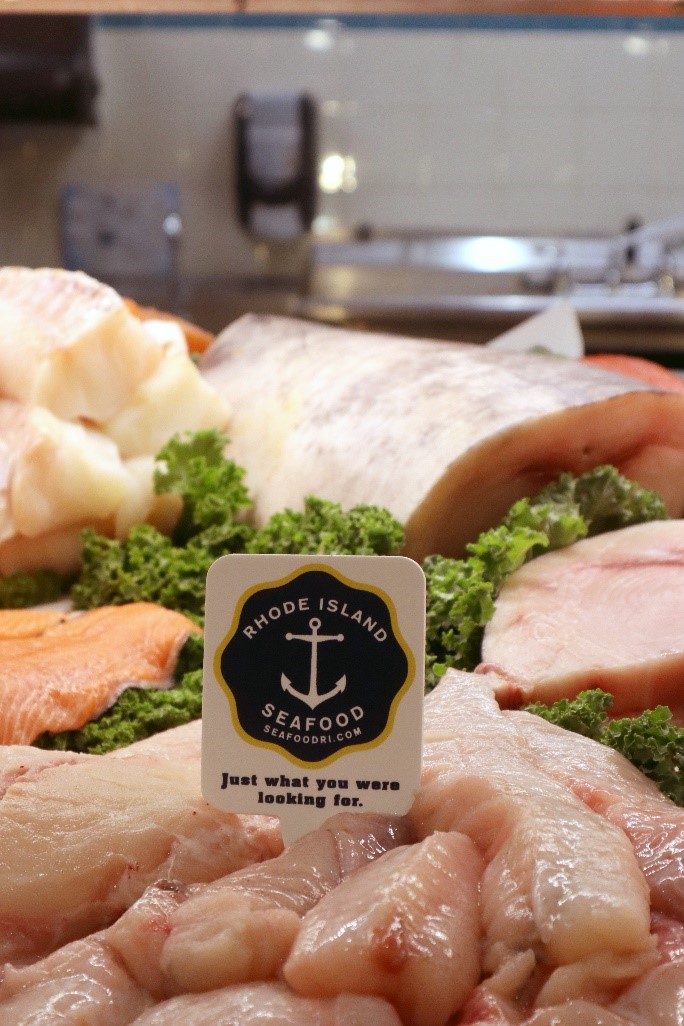American Fisheries Society publishes URI team’s research article
By
Hugh Markey
It’s better to harvest many fish species lightly than to harvest few species heavily. That’s the result of a study published in Fisheries magazine and conducted by Jeremy Collie from the Graduate School of Oceanography and a group of fisheries experts.
Collie
uses an ecosystem-based fisheries management approach that considers not only
targeted species, but the interactions of those species and other factors such
as unharvested species, climate conditions and habitat in conducting his
research. This study tested several developments in fisheries management that
had previously been theoretical.
“Although
people have been advocating for balanced harvesting, there hasn’t been adequate
measuring to see the ecosystem – species balance,” Collie said. “That’s one of
the things we set out to do with this project.”
The team wanted to measure the composition of species offered in the marketplace compared to what was available in the local ecosystem. The objective was to “…identify the constraints and opportunities for sustaining ecosystem balance while providing a diverse seafood market.”
Kate Masury of Eating with the Ecosystem in Wakefield researched the availability of lesser-known species in the retail trade. “If fishermen were harvesting a little bit of everything, you need markets to follow suit,” Masury said.
“If
you don’t have a market, then it’s not going to work because fishermen won’t
make any money. Part of the project was to look at these markets and find out
whether there was a demand for such alternatives. We were looking at what the
availability is of a given species in the marketplace. We found a great
imbalance between species in the ecosystem and what was available in the
marketplace.”
A
popular misconception about the force behind the lack of selection in the
marketplace is that fishermen often discard off-species varieties, thus
preventing them from ever reaching stores. However, Collie says the data
collected indicates that there is a loss rate of only 14% from discarding. For
this reason, he questions the practicality of relying on regulations to restore
the ecosystem-market availability balance.
He
points to a law in the European Union requiring fishermen to bring in all the
fish they catch. However, that isn’t necessarily less wasteful. “For one thing,
maybe that wasn’t the problem to start with, even though it was a kind of feel-good
gesture. Maybe discarding wasn’t as much of a problem as they thought. But the
other thing is that it’s created a lot of other, secondary problems because
there may not be a market for it. You’re bringing in all this fish, but nobody
wants it, so then what do you do? If you want to fix the problem that’s not the
place to start.”
The
URI group’s approach to encouraging consumption of a wider range of fish
emphasized education, said Masury.
“The
market is one place to put energy into trying to promote balance to make this
better. If you have more markets for the full selection of species, it not only
helps consumers to be able to eat a wider variety of foods and engage more with
their local seafood, but you’re also providing fishermen with the opportunity
to catch a wider variety of fish species that allows them to take advantage of
the species that are available. It should ultimately make it easier for them to
catch fish. For that to happen, though, consumers have to be willing to eat
those species. We have to have markets for them,” Masury said.
Part
of the research into the question of marketing the fish was conducted by a
group of volunteers. “One of the cool bonuses that came out of this process is
that we had 86 citizen-scientists that were helping us collect this data in
terms of the market availability part of the equation,” Masury said.
“They
had to visit all these fish markets and ask for these species. And because they
were asking, in a lot of these cases, the market was like, ‘oh yeah, we can get
that’. It showed that consumer requests for these species influences these
markets in terms of their carrying these species,” she said.
Each
week, for 26 weeks, each volunteer sought out four randomly chosen species in
up to three local markets of his/her choice throughout New England. The
resulting database comprises 2,946 visits to 394 different markets in search of
52 different species.
An
unexpected result is that the citizen-scientists ended up becoming great
ambassadors for eating a wider diversity of local seafood.
“Because
they were kind of forced through this project to eat a lot of species and try
cooking with them at home, they became a lot more comfortable with them and
made it less intimidating,” Masury said. “I think that’s a big factor with a
lot of people, that they just don’t know what to do with the species. Trying to
get people out of their comfort zone is difficult sometimes. “
Collie
and Masury have no illusions about the challenges of educating the public.
“It’s
kind of an uphill battle, just because seafood markets are so global even for
people who want to promote consumption of local seafood, they’re always facing
the headwinds of some import coming in and undercutting the price.” Collie
said. “It’s almost inevitable. Still, the more people know that the squid
they’re buying could be frozen once, sent to China for processing, then frozen
again, they might think, ‘Hmm, I’m not sure how comfortable I am with that.’”
